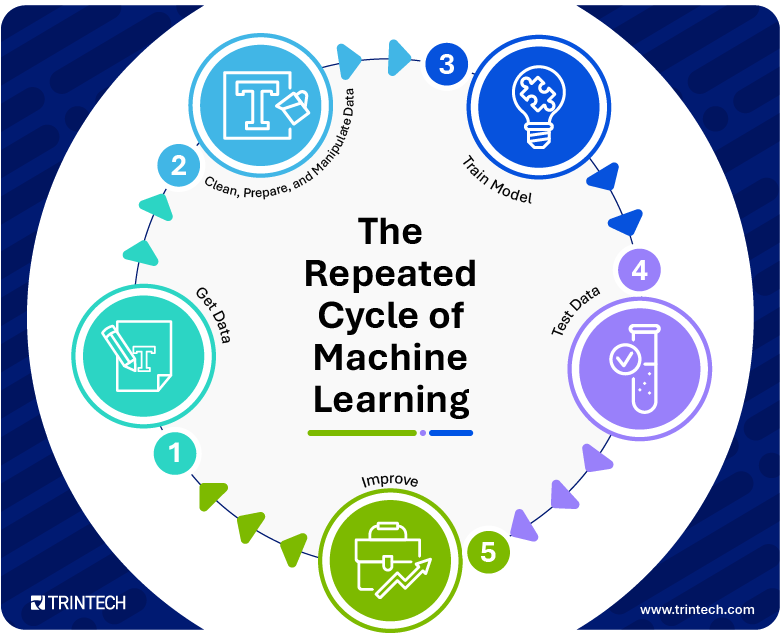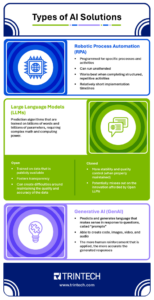Understanding the Fundamentals of AI (and Why it Matters for Finance & Accounting Teams)
Blog post
Share
From stalling growth projections to widening talent gaps and geopolitical tensions, businesses are navigating through unprecedented challenges. Finance and accounting teams are redirecting their focus to essential goals like cost management and process optimization to ensure resilience and profitability. Amidst these challenges, one disruption stands out: Artificial Intelligence (AI).
As AI becomes rapidly more prevalent across our everyday lives, finance and accounting leaders are being tasked with understanding how this technology can properly address the challenges faced by their organizations. Knowledge is power, so understanding how AI transforms ways of working while adhering to existing processes is essential to a successful financial transformation.
What is AI?
The most practical way to think of AI is as an umbrella term for a range of automation technologies that can simulate human intelligence by machines. This process typically involves feeding data and rules about decision-making into a machine. That machine then rationalizes the data received and defines a process for conclusions and self-corrections. It draws those conclusions based on pattern recognition technology applied to trends identified within the data. The entire process is iterative, so the AI can learn new patterns and update its own decision-making. This is known as Machine Learning (ML).
AI operates through algorithms, which are problem-solving operations that are built to function like human thought. Algorithms require huge amounts of data and significant computational power to operate effectively, in addition to the resources needed to train the AI via ML.

AI as it exists today is referred to as Narrow AI, because it only works in a limited context. While it can simulate human intelligence in one specific area, it is only focused on performing a single task at a time. A comprehensive AI that can match the full breadth and depth of human thought is still not possible today, and whether it will be in the future is a subject of debate.
What Are the Types of AI Solutions?
AI solutions fall broadly into the three categories below. Their purposes range from supporting insight and decision-making to automating highly complex processes or human interactions.
Robotic Process Automation
Robotic process automation (RPA) falls on the simpler end of the AI spectrum. It is a class of software that is programmed for specific processes and activities that, once set up, can run unattended. RPA works best when completing structured, repetitive activities like data entry or, when it comes to the financial close, reconciliations and reporting. Implementation timelines are relatively short for these straightforward processes since deep integration isn’t required.
Large Language Models
Large Language Models (LLM) are prediction algorithms that are trained on billions of words and trillions of parameters, requiring complex math and computing power to function. LLMs are either open source or closed, depending on how they are trained. Open source LLMs are trained on data that is publicly available. This fosters transparency, but can create difficulties around maintaining the quality and accuracy of the data, potentially leading to issues like AI model drift and confabulating. Closed LLMs offer more stability and quality control when properly maintained, while potentially losing out on the innovation afforded by a more democratic approach.
Generative AI
Generative AI (GenAI) that overlay LLMs are called Generative Pretrained Transformers (GPT). Their algorithms predict and generate language that makes sense in response to a question, called a “prompt,” although this isn’t limited to text; GenAI can create code, images, video and audio, too. The more human reinforcement that is applied during model training is, the more accurate the generated responses are.
Download our Types of AI Solutions infographic to share with your social channels!

Bottom Line: How Your Team Can Benefit
Organizations with the most effective AI strategies will likely utilize a combination of the technologies above as they work towards replacing manual processes with automation. By viewing AI as another valued member of the team—one that can take over the most tedious tasks—other team members can focus their attention on exceptions and value-added activities. This will in turn lead to increased efficiency, improved decision making, and enhanced risk mitigation.






